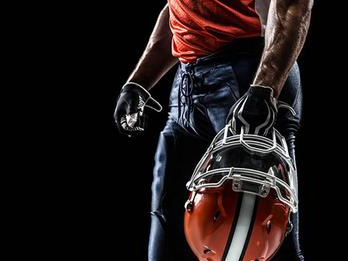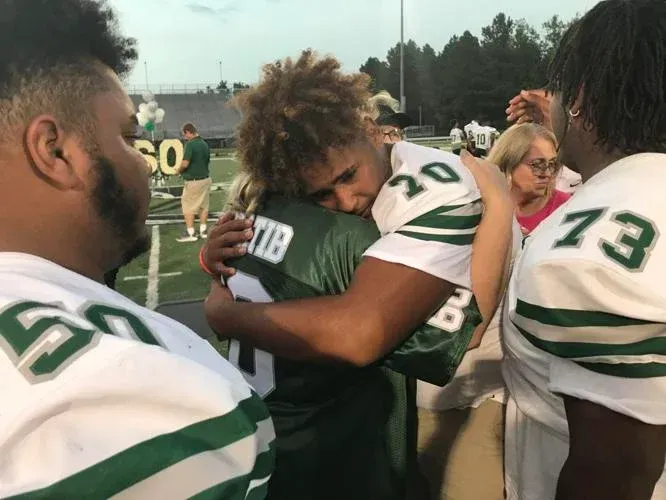Here’s How You Can Lower Your Brain Injury Risk
Traumatic brain injuries, or TBIs, are more common than you might think. Here are ways to prevent them.
More than 2.8 million people were treated for a traumatic brain injury – often referred to as a TBI – in U.S. emergency rooms in 2014, according to the Centers for Disease Control and Prevention. Of those, over 280,000 people were hospitalized and some 56,000 died as a result of their injuries.
But what exactly is a brain injury – and are there ways you can prevent, or at least lower your risk, of sustaining one?
March marks Brain Injury Awareness Month, which makes it a great time to tackle those questions and offer answers that could be life-saving.
A Brain Injury, Explained
Generally speaking, there are two types of brain injuries:
- Acquired brain injuries, which result from conditions such as stroke, seizures or tumors.
- Traumatic brain injuries, which result from an external force causing damage to the brain, like if you get into a car accident.
Both types of brain injuries can alter the normal functioning of the brain – and that can impact the way you think and move, your speech and swallowing capabilities, and even your mood, behavior and social interactions.
Accidental falls, hitting or being hit by an object and car accidents are the most common causes of TBIs. They're categorized as mild, moderate or severe based upon clinical presentation and imaging findings. But even if a TBI is seen as mild – like is often the case with a concussion – their effects can be distressing.
Overall trends point to TBI-related emergency department visits having increased over time, especially for those 75 years and older and children under 4. And, as far as hospitalization goes, the highest rates were in the over-75 set and teens between 15 and 19 years old, according to the CDC.
You've likely heard about the impact of concussions on kids and teens – and the numbers offer a look into what's happening. About 35% of kids who visit the emergency department for a TBI were treated for a sports and recreation-related TBI. And almost half of these were sustained during contact sports, including football, bicycling, basketball, playground activities and soccer, according to research.
But kids and seniors aren't the only ones dealing with the impact of TBIs. For men and women of the military, TBIs have become quite the common injury. In fact, TBIs have been classified as the "signature injury" of military members of the Iraq and Afghanistan wars, mainly as a result of IEDs.
Know the Risk Factors
There are a number of factors that could up your risk of sustaining a brain injury. These include:
Age. As touched on earlier, kids under 4, teens and young adults ages 15 to 24, as well as adults over 65, are all at the highest risk of a TBI. And males are at a much higher risk compared to females when it comes to injury and death resulting from a TBI. Research has also shown that higher rates of TBI are reported in lower socioeconomic areas.
Past injuries. Another big risk factor? A past brain injury. In fact, after sustaining just one brain injury, your risk of sustaining another increases almost three-fold – and that trend appears to only increase with each subsequent injury. This is particularly concerning for athletes who sustain multiple concussions, which could lead to a condition known as chronic traumatic encephalopathy (CTE). CTE is a neurodegenerative disorder that is gaining more visibility lately, due to its impact on professional athletes. Unfortunately, at this point, a definitive CTE diagnosis can only be given after death, when an autopsy is done. But that's not the only condition of concern: "Second impact syndrome" is when an athlete sustains a second brain injury before recovering from the first – and it can lead to catastrophic injuries and possibly even death.
Taking multiple medications. There is an increased awareness in the medical field that using multiple medications could be a contributor to TBIs, especially among seniors. While they don't directly cause a TBI, the side effects of some commonly prescribed medications for conditions such as diabetes mellitus, cardiac arrhythmias, depression and dementia must be considered. The same is true of narcotic pain medications, which have a multitude of side effects.
Alcohol use. Alcohol use is also a major TBI risk factor, contributing to both falls and car accidents. Similarly, it's been shown that alcohol abuse can spike after a TBI, often due to poor coping mechanisms.
Learn Prevention Techniques
Prevention of a TBI is key – and has become one of the main focuses for medical professionals. Here are some measures you can take:
Look for hazards around your home – and consider modifications. To help prevent falls, be mindful of your home environment – especially if you're an older adult. You can trip over uneven surfaces, objects like rugs and even smaller items, like a pet's ball or grandchild's toy left out in high-traffic areas around your home. Similarly, having ample lighting in your home is important. For example, many falls occur at night when getting up and using the bathroom. By having enough lights – that are quick and easy for you to turn on – the risk for falls is reduced. Checking your home for hazards, as well as installing additional lighting and other home modifications, like lowering your bed height, adding side rails on stairs or grab bars or toilet seat risers to the bathroom, can all aid in fall prevention. Also smart? A "life alert" system can make access to help easier if you should experience a fall. Likewise, evaluation for assistive devices – like a straight cane or rolling walker – is a good idea as you get older, too.
Talk to your doctor about all your medication. Another way to reduce falls? Review any existing medications you're taking and the possible side effects from each of these and when used in combination. Talk to your doctor about your concerns, especially when a new medication is added to the regimen or when a new medical condition is diagnosed. Also, find out if things like glasses, hearing aids and specific shoes are medically appropriate, since these can also cut your fall risk. And be sure to keep up with regular screenings should your need for these change over time.
Report a concussion – and follow return-to-play guidelines. Preventing sports-related injuries, especially among kids and teens, comes from increased awareness, continuous education and commitment. Players, parents and coaching staff are encouraged to use online and app-based education tools. For example, HEADS UP is a CDC initiative aimed at improving awareness and education regarding TBI. As this public awareness continues to grow, so does encouragement to report concussion-related symptoms. Coaches, parents, medical providers and school professionals play an integral role in demonstrating and role-modeling safe and inclusive attitudes about concussion identification, prevention and recovery. That includes following guidelines for return-to-play, which are now established.
The bottom line? When it comes to traumatic brain injury, I urge you to learn as much as you can – especially if you have young kids or seniors in your life – and then incorporate these prevention techniques to help keep you and your loved ones as safe as possible.






